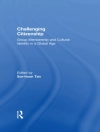`I was impressed with the accessibility of the book, offering a guided tour through the history, context and purposes of reminiscence therapy, the range of applications from promoting social and emotional stimulation to reminiscence as psychotherapy. It also provides a brief overview of its theoretical underpinnings… As a book for health professionals interested in reminiscence work, it is a must for the shelf… most importantly it emphasizes the need for adequate training and supervision for those undertaking this type of work… the authors [also] provide a very good working guide to the assessment process′ –
Aging and Health
In this practical and accessible book, leading exponents of reminiscence work describe the purposes and techniques of reminiscence and set out detailed guidelines on how to implement and conduct a wide range of reminiscence activities with different types of client.
Highlighting its tremendous diversity and potential – and its special ability to allow people of all ages and abilities to communicate deeply about their lives – the authors separate out the different aims of reminiscence, which include intellectual or social stimulation, allowing people to leave behind them a cultural legacy, or a means of intergenerational communication. They show clearly how each can be directly beneficial either to clients or their carers, or for improving the culture of the arena in which the activity is being carried out.
Tabela de Conteúdo
Introduction
PART ONE: SETTING THE SCENE
An Introduction to the Purposes
The History and Development of Reminiscence-Based Activities
The 3Cs – Client, Carer, Context
PART TWO: REMINISCENCE WORK THAT HELPS CLIENTS
Reminiscence To Encourage Spontaneous Conversation between Clients
Reminiscence To Encourage Informal Conversation between Staff and Clients
Reminiscence as Fun
Reminiscence To Promote Emotional and Social Stimulation
Reminiscence To Promote Emotional and Social Stimulation with People Who Are Severely Disorientated
Individual Reminiscence Work
Reminiscence To Create Group Cohesion
Reminiscence To Teach People How to Use Groups Effectively
Reminiscence To Re-Use Old Skills or Learn New Ones
Reminiscence as Oral History To Maintain or Improve Skills
Reminiscence To Aid Intergenerational Communication
Reminiscence To Achieve Cultural Legacy
Reminiscence and Spirituality
Reminiscence in Assessment and Treatment
Reminiscence in the Assessment Process
Reminiscence as Psychotherapy
Reminiscence for Life Review
Reminiscence To Aid the Creation of a Positive Identity
PART THREE: USES OF REMINISCENCE TO BENEFIT CARERS
Reminiscence To Aid Communication between a Person with a Disability and Their Family
Reminiscence To Train Staff in Groupwork or To Improve Staff Groupwork Skills
PART FOUR: REMINISCENCE AS THE PHILOSOPHY OF THE UNIT
Reminiscence To Improve Staff Understanding of the Individual
and Reminiscence as the Working Philosophy of the Unit
Finishing Time – `People and Listening to People…′












